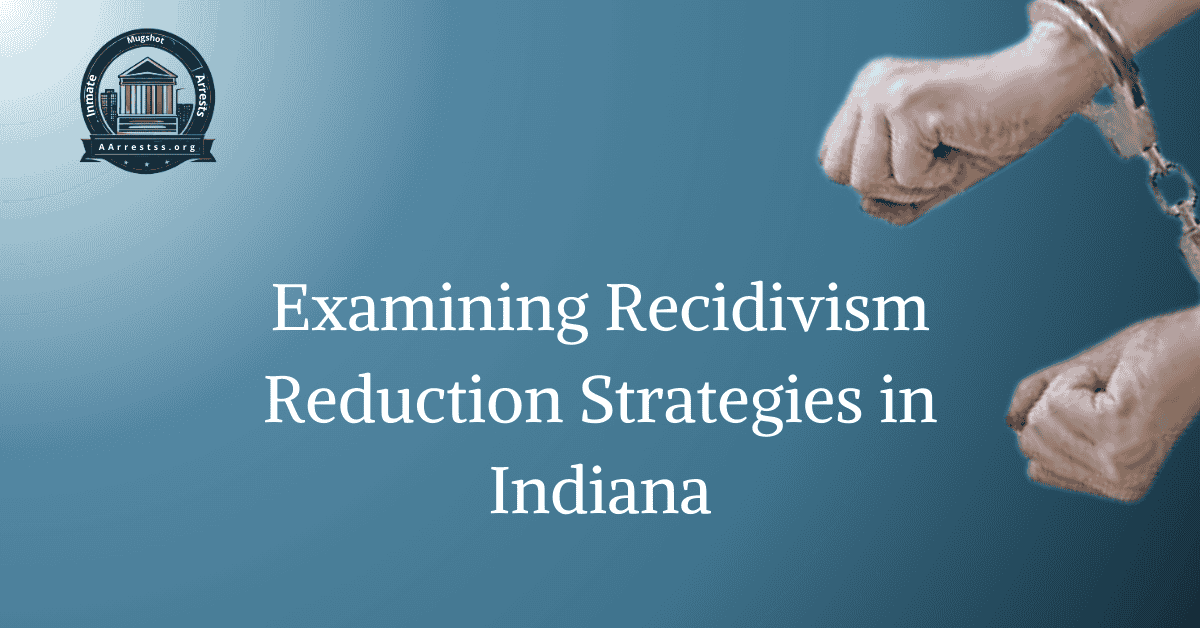Examining Recidivism Reduction Strategies in Indiana
Over the years, the Indiana County Jails have undergone a transformative journey encapsulating their past, present, and future. In the past, these institutions were often characterized by outdated facilities and limited resources, struggling to meet the complex demands of an evolving criminal justice system. However, as we navigate the present landscape, substantial efforts have been made to modernize these jails, implementing progressive reforms and prioritizing rehabilitation over mere incarceration. The focus has shifted towards creating environments that foster education, mental health support, and skill development, aiming to reintegrate individuals into society successfully.
Recidivism Reduction Strategies in Indiana
Recidivism, or the tendency for individuals to reoffend after being released from prison, is a critical issue in the criminal justice system. In recent years, there has been a growing emphasis on implementing effective strategies to reduce recidivism rates and promote successful reintegration into society. This study aims to examine the various recidivism reduction strategies implemented in the state of Indiana, evaluating their effectiveness and identifying areas for improvement. By understanding the factors that contribute to successful reentry and reducing the likelihood of reoffending, policymakers and practitioners can develop evidence-based interventions to support individuals and enhance public safety.
Evidence-Based Approaches
One of the key strategies in reducing recidivism rates in Indiana is the implementation of evidence-based approaches. These approaches rely on research and data to identify effective interventions and programs. By utilizing evidence-based practices, policymakers and practitioners can ensure that resources are allocated to strategies that have been proven to work. This approach helps to maximize the impact of recidivism reduction efforts and improve outcomes for individuals reentering society.
Education and Vocational Training
Another important aspect of reducing recidivism rates is providing education and vocational training opportunities for individuals during their incarceration. By offering educational programs and vocational training, inmates gain valuable skills and knowledge that can increase their chances of finding employment upon release. This not only reduces the likelihood of reoffending but also improves the individual’s ability to reintegrate into society and lead a productive and fulfilling life.
Substance Abuse Treatment
Addressing substance abuse issues is crucial in reducing recidivism rates. Many individuals who end up in the criminal justice system have substance abuse problems that contribute to their criminal behavior. By providing comprehensive substance abuse treatment programs, including counseling, therapy, and support groups, individuals can address the root causes of their addiction and develop healthier coping mechanisms. This reduces the likelihood of relapse and subsequent reoffending.
Mental Health Support
Mental health support is also a critical component of recidivism reduction strategies. Many individuals in the criminal justice system have underlying mental health conditions that contribute to their criminal behavior. By providing access to mental health services, including counseling, therapy, and medication management, individuals can receive the support they need to manage their mental health effectively. This not only reduces the risk of reoffending but also improves the individual’s overall well-being and quality of life.
Community Reintegration Programs
Successful reintegration into society is essential in reducing recidivism rates. Community reintegration programs aim to provide support and resources to individuals upon their release from prison. These programs may include housing assistance, job placement services, and access to social support networks. By helping individuals establish stable housing, gain employment, and connect with positive influences in their community, the likelihood of reoffending is significantly reduced.
FAQs
What is recidivism?
Recidivism refers to the relapse into criminal behavior by a person who has previously been convicted of a crime and served their sentence.
What are recidivism reduction strategies?
Recidivism reduction strategies are various approaches and programs implemented to lower the likelihood of individuals reoffending after their release from incarceration.
What is the significance of examining recidivism reduction strategies in Indiana?
Examining recidivism reduction strategies in Indiana is crucial because it allows policymakers and stakeholders to identify effective measures that can be implemented to reduce crime rates, improve public safety, and support successful reintegration of individuals into society.
What are some specific recidivism reduction strategies being implemented in Indiana?
Indiana has implemented several strategies, including cognitive-behavioral therapy programs, vocational training and job placement programs, substance abuse treatment programs, and community-based supervision and support programs.
How do these strategies contribute to reducing recidivism?
Cognitive-behavioral therapy programs help individuals develop positive thinking patterns and problem-solving skills, reducing the likelihood of engaging in criminal behavior. Vocational training and job placement programs provide individuals with employment opportunities, reducing the need to resort to illegal activities for survival. Substance abuse treatment programs address underlying issues that contribute to criminal behavior. Community-based supervision and support programs provide individuals with the necessary resources and guidance to reintegrate successfully into society.
What are the potential outcomes of successful recidivism reduction strategies?
Successful recidivism reduction strategies can lead to lower crime rates, safer communities, cost savings for the criminal justice system, and improved rehabilitation and reintegration outcomes for individuals who have been involved in the criminal justice system.






